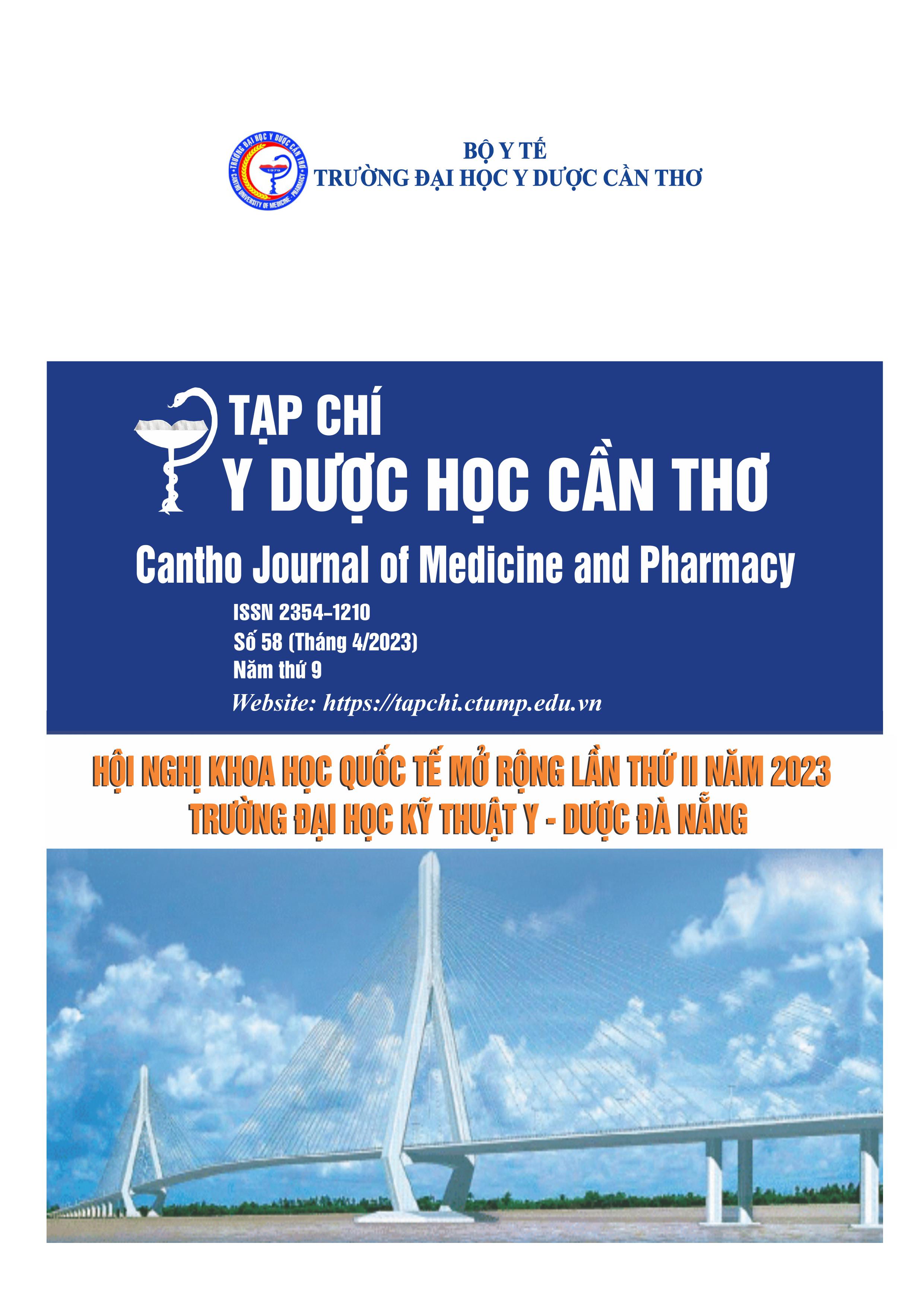APPLICATION OF PEDICLED MUSCULOCUTANEOUS FLAPS IN DEFECT RECONSTRUCTION AFTER SURGERY OF ORAL CANCER AT HUE CENTRAL HOSPITAL
Main Article Content
Abstract
Background: Carcinoma of the oral cavity is one of the most common cancers of the head and neck system. Due to anatomical characteristics, surgery could lead to defects. The application of reconstructive surgery is extremely necessary, helping to expand the indications for surgery, restore defects, and provide a better chance for patients to live. Objective: To evaluate the results of application of pedicled musculocutaneous flaps in defect reconstruction after surgery of oral cancer at Hue Central Hospital. Materials and methods: A prospective, clinical interventional descriptive study on 34 oral squamous cell carcinoma patients operated at Hue Central Hospital from March 2020 to December 2022. Results: 34 pedicled musculocutaneous flaps were used in defect reconstruction after surgery of oral cancer. Four types of flaps were use, in which the temporalis fascia flap was used for 3 cases (8.8%), the temporalis myofascial flap was used for 6 cases (17.6%), the submandibular fascia flap was used for 15 cases (44.1%) and the pectoralis major myocutaneous one was used for 10 cases (29.5%). The results of the study showed that 100% of flaps were good. There were no serious complications after surgery. Good function recovery and low recurrence rate were recorded after surgery. Conclusion: Using flexible pedicled musculocutaneous flaps is a suitable choice for moderate and large defects after surgery along with major organ reconstruction to preserve vital function and morphology of the oral cavity for cancer patients.
Article Details
Keywords
Oral cancer, temporalis myofascial flap, submandibular flaps, pectoralis major myocutaneous flaps
References
2. Brown JS, Rogers SN, McNally DN, Boyle M. (2000), “A modified classification for the maxillectomy defect”, Head Neck, 22, pp. 17-26.
3. Chen W.L., Li J.S., Yang Z.H., Huang Z.Q., Wang J.U., Zhang B. (2008), “Two submental island flaps for reconstructing oral and maxillofacial defects following cancer ablation”, J Oral Maxillofac Surg, 66(6), pp. 1145-56.
4. Head and neck cancer. NCCN clinical practice guidelines in oncology. version 1.2022.
5. Jaquet Y., Higgins K.M., Enepekides D.J. (2011), “The temporoparietal fascia flap: a versatile tool in head and neck reconstruction”, Curr Opin Otolaryngol Head Neck Surg, 19(4), pp. 23541.
6. Liu M., Liu W., Yang X., Guo H., Peng H. (2017), “Pectoralis Major Myocutaneous Flap for Head and Neck Defects in the Era of Free Flaps: Harvesting Technique and Indications”, Sci Rep, 7, 46256.
7. Milenović A., Virag M., Uglesić V., Aljinović-Ratković N. (2006), “The pectoralis major flap in head and neck reconstruction: first 500 patients”, J Craniomaxillofac Surg, 34(6), 340-3.
8. Tan O., Atik B., Parmaksizoglu D. (2007), “Soft-tissue augmentation of the middle and lower face using the deepithelialized submental flap”, Plast Reconstr Surg, 119, 873-9.
9. Vermorken J.B., Specenier P. (2010), “Optimal treatment for recurrent/metastatic head and neck cancer”, Ann Oncol, 21(7), 252-61.
10. Wang W.H., Zou Z.R., Xu B., Wang W.Q., Shen S.Y. (2017, Maxillary Reconstruction Using Submental Artery Island Flap and Sagittal Mandibular Ramus/Coronoid Process Graft Pedicled with Temporalis Muscle”, J Oral Maxillofac Surg, S0278-2391(17), 30735-8.


